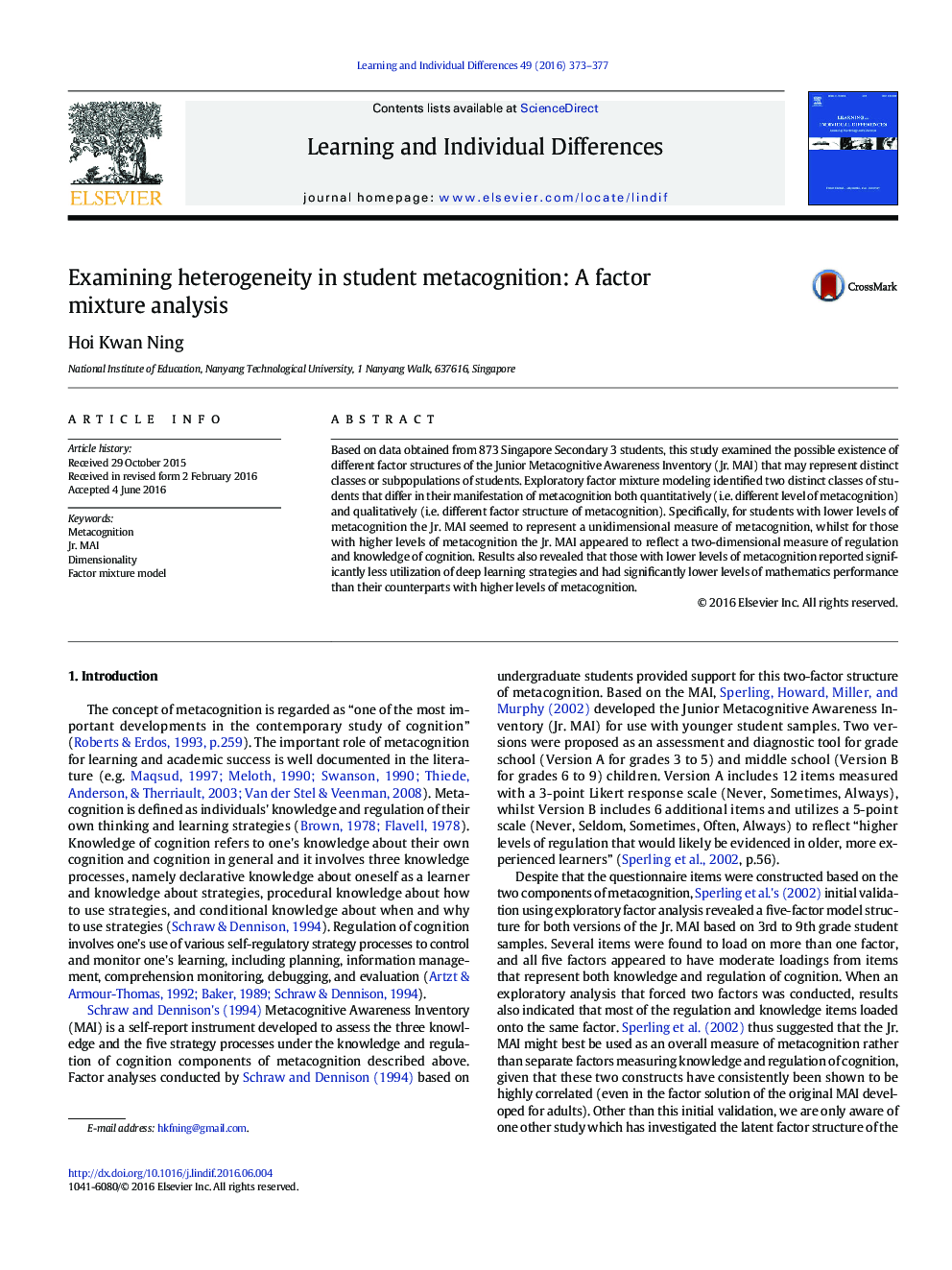| Article ID | Journal | Published Year | Pages | File Type |
|---|---|---|---|---|
| 6844818 | Learning and Individual Differences | 2016 | 5 Pages |
Abstract
Based on data obtained from 873 Singapore Secondary 3 students, this study examined the possible existence of different factor structures of the Junior Metacognitive Awareness Inventory (Jr. MAI) that may represent distinct classes or subpopulations of students. Exploratory factor mixture modeling identified two distinct classes of students that differ in their manifestation of metacognition both quantitatively (i.e. different level of metacognition) and qualitatively (i.e. different factor structure of metacognition). Specifically, for students with lower levels of metacognition the Jr. MAI seemed to represent a unidimensional measure of metacognition, whilst for those with higher levels of metacognition the Jr. MAI appeared to reflect a two-dimensional measure of regulation and knowledge of cognition. Results also revealed that those with lower levels of metacognition reported significantly less utilization of deep learning strategies and had significantly lower levels of mathematics performance than their counterparts with higher levels of metacognition.
Related Topics
Social Sciences and Humanities
Psychology
Developmental and Educational Psychology
Authors
Hoi Kwan Ning,
